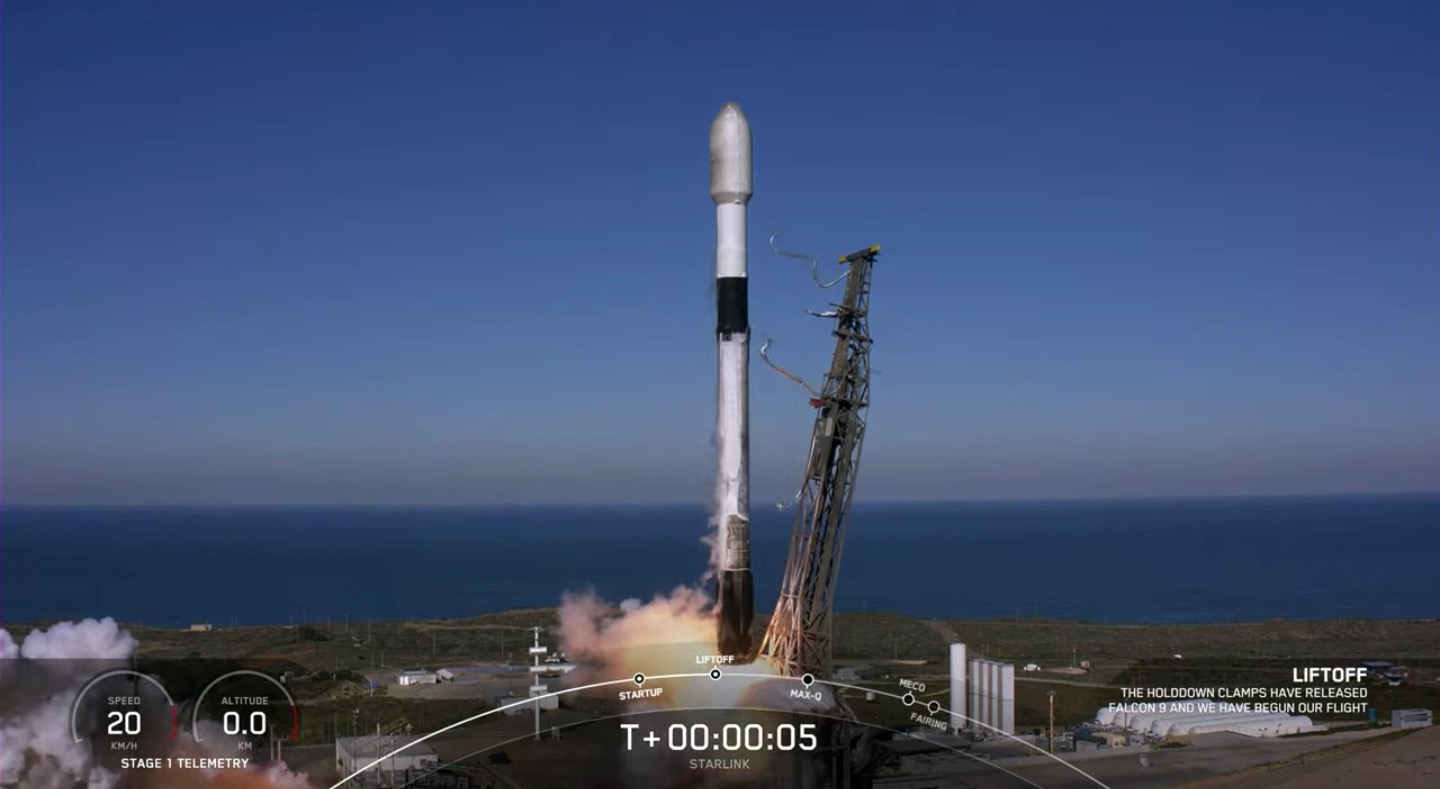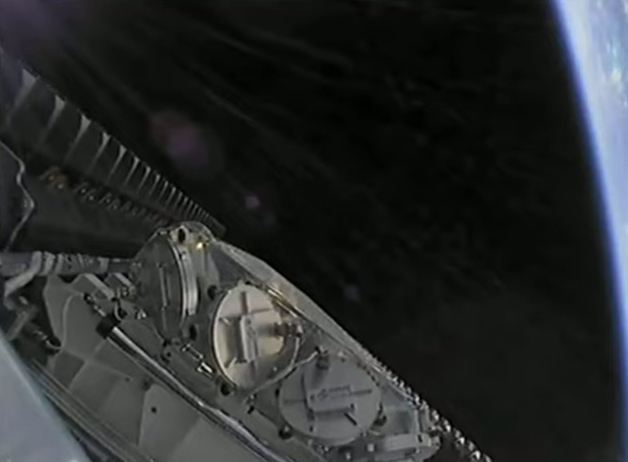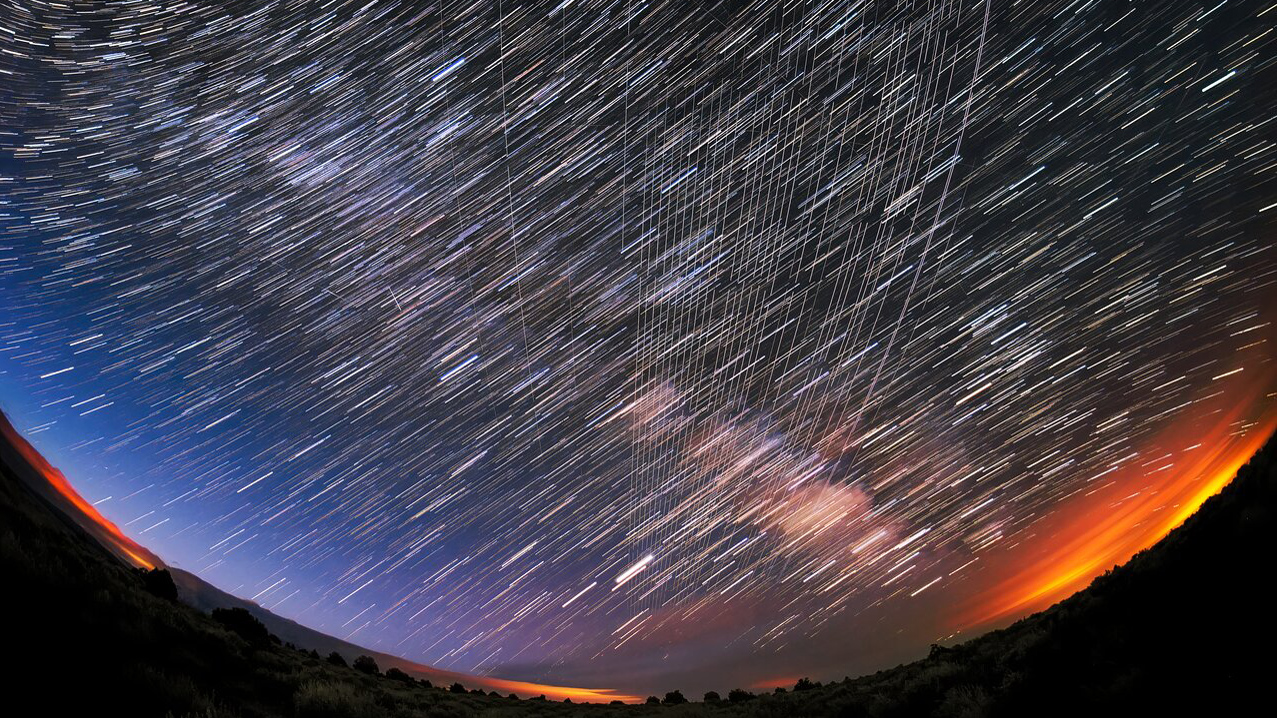SpaceX promises sustainability and safety for Starlink constellation

Amid concern from NASA, SpaceX says it has "significant resources" to exceed best practices with Starlink when it comes to sustainability and safety.
In an update published to the company website Feb. 22, SpaceX outlined its sustainability and safety protocol for its Starlink internet satellites on Monday (Feb. 28), as the company seeks to add tens of thousands more of the probes to its fast-growing megaconstellation.
This update by SpaceX comes amidst recent concerns raised by NASA about the impact of more Starlink satellites. NASA's concern follows earlier criticisms of Starlink Internet satellites for accelerating the rate of near-collisions in space, including to the International Space Station, and for interfering with astronomy observations due to their brightness. SpaceX addressed the first concern (the collisions and debris) in detail with this new outline.
Related: SpaceX's Starlink satellite megaconstellation launches in photos
In this new statement, SpaceX promises a commitment for "a safe orbital environment, protecting human spaceflight, and ensuring the environment is kept sustainable for future missions to Earth orbit and beyond."
The lengthy update includes SpaceX's plan of approach for current and future Starlink launches, including high maneuverability, open data sharing with other space companies, agencies and authorities, and an in-space collision avoidance system to be used as a last resort.

In SpaceX's words, these are the company's key practices for Starlink:
Get the Space.com Newsletter
Breaking space news, the latest updates on rocket launches, skywatching events and more!
- Designing and building highly reliable, maneuverable satellites that have demonstrated reliability of greater than 99%;
- Operating at low altitudes (below 600 km [372 miles]) to ensure no persistent debris, even in the unlikely event a satellite fails on orbit;
- Inserting satellites at an especially low altitude to verify health prior to raising into their on-station/operational orbit;
- Transparently sharing orbital information with other satellite owners/operators;
- Developed an advanced collision avoidance system to take effective action when encounter risks exceed safe thresholds.
For this constellation of satellites, SpaceX is leaning on advanced technologies such as inter-satellite optical (or laser) communications to make these best practices possible, the company said in the update. SpaceX additionally urged other operators "to join us" in practices such as sharing orbital data and updating key government stakeholders, especially including the Federal Communications Commission (FCC) that governs telecommunications activities in orbit.
"SpaceX continues to innovate to accelerate space technologies, and we are currently providing much-needed internet connectivity to people all over the globe, including underserved and remote parts of the world, with our Starlink constellation," SpaceX noted.
The company pointed to other factors that make Starlink a highly adaptable system, in SpaceX's eyes, including a low rate of individual satellite failure (1%), a commitment to deorbit satellites deemed at risk of failure and special shields and battery equipment to reduce micrometeorites or battery failures from causing catastrophic issues. Further, within these practices, all satellites are deorbited within four weeks of ending their operational lifetime.
On Feb. 3, SpaceX executed a launch in which the satellites on board were destroyed due to solar activity temporarily increasing the density of the Earth's atmosphere.
SpaceX argued that by placing the satellites into a low orbit, rare situations like this allow the satellites to be "quickly and actively deorbited using its thruster, or passively by atmospheric drag." (The company is also asking that the FCC change its standards for deorbiting from 25 years to a much faster timeline, to reduce the risk of orbital debris.)
The company also pointed to data transparency practices it would like other operators to do, such as sharing orbital parameters on Space-Track.org and providing "routine system health reports" to the FCC that include recent orbital maneuvers to reduce collision risk.
SpaceX acknowledged that its satellites have come close to major hardware, including the ISS and the Chinese space station Tiangong, but said its collision risk system has been checked out with NASA's Conjunction Assessment and Risk Analysis (CARA) program under a Space Act Agreement with NASA.

"We work directly with NASA and receive ISS maneuver plans to stay clear of their current and planned trajectory including burns," SpaceX wrote. "China does not publish planned maneuvers, but we still make every effort to avoid their station with ISS-equivalent clearance based on publicly available ephemerides [orbit information]."
Nevertheless, NASA has raised concerns about SpaceX's new Starlink satellites. The agency has "concerns with the potential for a significant increase in the frequency of conjunction events and possible impacts to NASA’s science and human spaceflight missions," the agency stated in a letter which was submitted to the FCC in February as SpaceX requested permission to add 30,000 more Starlink internet satellites into orbit as part of a "Gen 2" Starlink system.
"NASA wants to ensure that the deployment of the Starlink Gen 2 system is conducted prudently," the agency added, "in a manner that supports spaceflight safety and the long-term sustainability of the space environment." The decision to approve SpaceX's Gen 2 system is still with the FCC.
Follow Elizabeth Howell on Twitter @howellspace. Follow us on Twitter @Spacedotcom or Facebook.
Join our Space Forums to keep talking space on the latest missions, night sky and more! And if you have a news tip, correction or comment, let us know at: community@space.com.

Elizabeth Howell (she/her), Ph.D., was a staff writer in the spaceflight channel between 2022 and 2024 specializing in Canadian space news. She was contributing writer for Space.com for 10 years from 2012 to 2024. Elizabeth's reporting includes multiple exclusives with the White House, leading world coverage about a lost-and-found space tomato on the International Space Station, witnessing five human spaceflight launches on two continents, flying parabolic, working inside a spacesuit, and participating in a simulated Mars mission. Her latest book, "Why Am I Taller?" (ECW Press, 2022) is co-written with astronaut Dave Williams.









